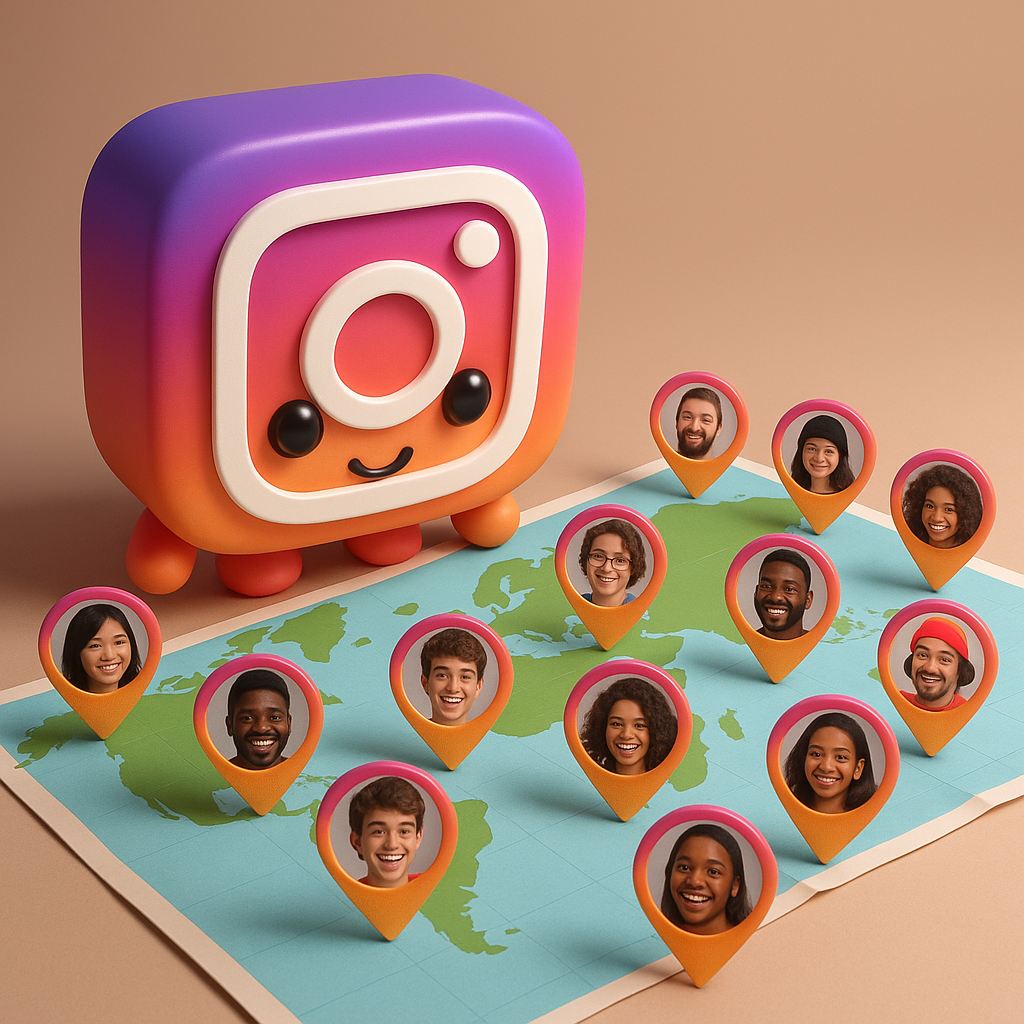
Why Location Tagging for Your OOTD Post Makes a Huge Difference (and Caption Mentions Just Don’t Cut It)
When you’ve spent time curating the perfect outfit, choosing the ideal backdrop, and capturing your best angles, the last thing you want is for your OOTD post to go unnoticed. And while many fashion creators and influencers add their shoot location in the caption think "Wearing linen vibes in Paris 🥐🌿" there's a game-changing strategy that often gets overlooked: tagging your location directly.
If you're serious about growing your fashion presence on Instagram, TikTok, or any other platform, location tagging can massively increase your post’s discoverability and engagement. Here's why:
1. Location Tags Are Searchable. Captions Aren’t.
Instagram and TikTok allow users to search and explore content by location. When you tag a location like “Shibuya Crossing” or “Palais-Royal Garden,” your post becomes instantly discoverable in that location’s feed or explore tab.
On the other hand, writing the location in your caption doesn’t link your post to that specific location feed. So unless someone is already following you or sees your post by chance, they’ll likely miss it.
2. Local Discovery Means Targeted Reach
Let’s say someone is heading to Seoul and searches for style inspiration in “Hongdae” or “Gangnam.” If your OOTD is tagged with that location, you’re now part of that visual story. This type of targeted discovery puts you in front of users who are:
Already interested in that location
Likely to engage with relevant content (like your look)
Possibly looking for influencers or stylists in that area
Mentioning “Gangnam” in your caption won't get you into that exclusive pool of localized posts.
3. Brands and Tourism Boards Look at Location Tags
Many fashion brands and travel partners actively scout content through geotags. They want to see creators who not only style themselves well but also visually elevate a place. Tagging your location helps brands and PR teams quickly assess your relevance to a campaign or collaboration opportunity.
If your OOTD is taken in a stunning boutique hotel or trendy district, make sure it shows up in the right place. Caption mentions can’t do that heavy lifting.
4. Better Categorization by the Algorithm
Instagram’s and TikTok’s algorithms factor in metadata like location tags to sort and recommend content. By tagging your OOTD’s exact spot, you’re giving the platform more context to:
Serve your content to local users
Push it on explore pages related to fashion or travel
Group your post with other high-performing content in that area
This gives you a stronger chance of going viral locally and possibly even globally.
5. Visual Mapping of Your Style Journey
When people visit your profile, they can click on your geotag history and see where your fashion content comes to life. This makes your page feel curated, adventurous, and well-traveled — especially useful if you're positioning yourself as a style-savvy traveler or location-based influencer.
Mentions in captions don’t provide that same interactive, scrollable map.
Final Tip: Tag Smartly, Not Just Frequently
Don’t just tag “New York City” for every OOTD in Manhattan. Be specific. Use tags like “SoHo,” “Williamsburg,” or even the name of the café or boutique street you’re on. Hyper-specific geotags often have less competition and higher engagement rates, especially from locals or people searching niche spots.
So Why Did Instagram Introduced Location Tagging?
When Instagram launched location tagging, it wasn’t just a fun add-on. It was a strategic move designed to make the platform more searchable, relevant, and connected to real-world experiences.
In the early days of Instagram, posts were mostly discovered through hashtags or by following users directly. But as the platform grew, so did users’ desire to find content tied to specific places, not just people.
Whether someone wanted to explore photos from a popular café in Paris, a fashion event in Milan, or street art in Brooklyn, Instagram needed a way to organize and surface that content more effectively.
That’s where location tagging came in.
By allowing users to tag where their photos or videos were taken, Instagram created a powerful way to:
Help users discover content from specific places
Allow brands, tourists, and locals to see what's trending in real-time, in specific locations
Let creators show off where they’ve been and connect with others in the same area
Give businesses more visibility through user-generated content.
It also made the platform more valuable for local businesses, influencers, and travelers by turning locations into dynamic content hubs. Today, location tags not only boost visibility, but they also give context, connect communities, and support Instagram’s algorithm in surfacing more relevant posts.
In short, location tagging was Instagram’s way of bringing the digital world closer to the physical one making every photo not just a story, but a place-based experience.